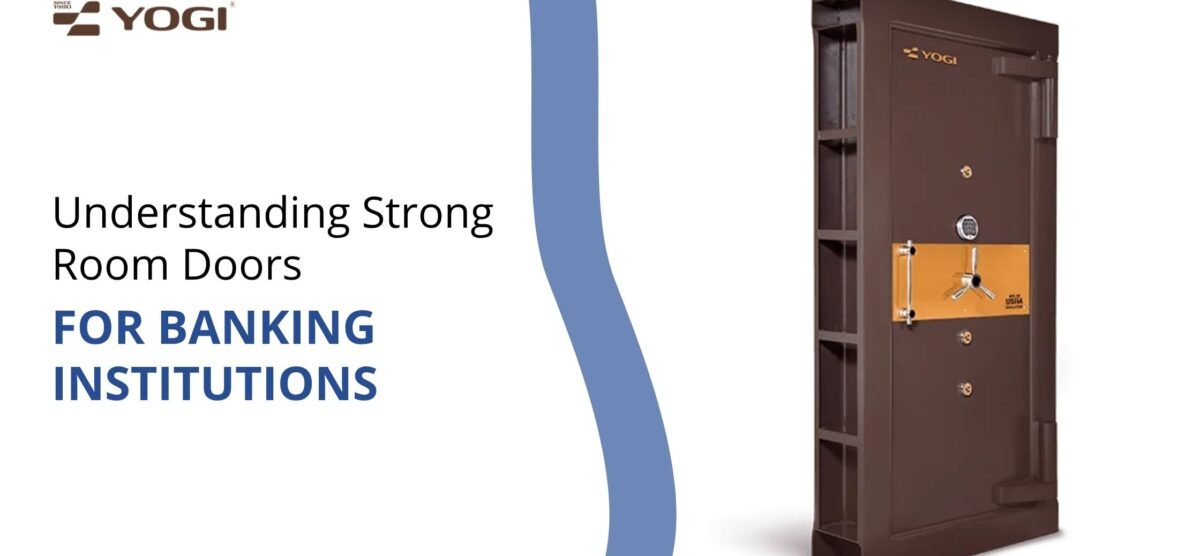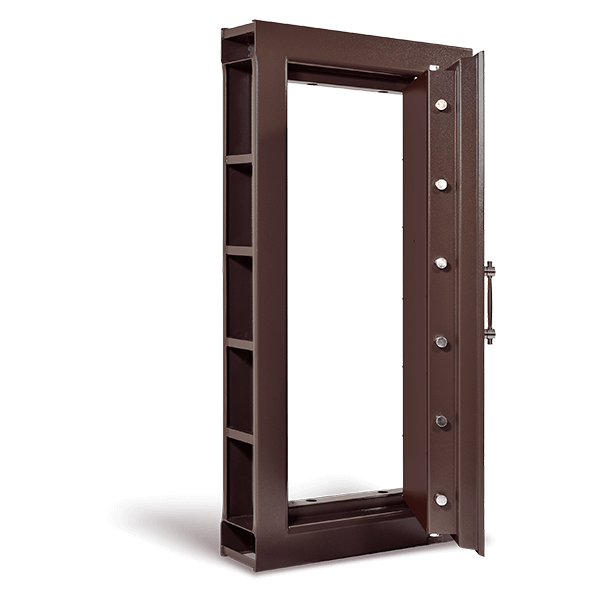Blog

Understanding Strong Room Doors for Banking Institutions
Picture this: a bank vault isn’t just a room—it’s a fortress. At its threshold stands a sentinel, not of flesh and blood, but of steel and ingenuity: the strong room door. For banking institutions, this is the linchpin of security, the barrier between your hard-earned assets and the audacious ambitions of would-be thieves. “Banks and financial institutions rely heavily on high-security strong room doors to protect cash reserves and sensitive documents from theft and physical attacks. These doors serve as the primary line of defence, ensuring that unauthorised access is prevented.” This is not just about protection—it’s about trust, compliance, and the unshakeable confidence that your valuables are safe.
The Evolution of Banking Security: From Vaults to Modern Strong Rooms
Contents
- 1 The Evolution of Banking Security: From Vaults to Modern Strong Rooms
- 2 Core Features and Construction Standards of Strong Room Doors
- 3 Regulatory Compliance and Certification: BIS and Beyond
- 4 Advanced Security Mechanisms: Locking Systems, Access Control, and Resistance Features
- 5 Customization and Adaptability: Meeting the Unique Needs of Banking Institutions
- 6 Comparative Analysis: Strong Room Doors vs. Traditional Vaults and Modular Solutions
- 7 Real-World Applications: Safeguarding Cash, Valuables, and Sensitive Documents
- 8 Innovations and Future Trends in Strong Room Door Technology
- 9 Why Choose Yogi Safe: Expertise, Reliability, and Commitment to Excellence?
- 10 Practical Guidance: Selecting, Installing, and Maintaining Strong Room Doors
- 11 Conclusion: Empowering Banking Institutions with Unmatched Security
Banking security has come a long way from the days of iron-bound chests and rudimentary locks. In the 19th century, vaults were massive, immovable structures—think thick granite walls and iron doors. But as criminals grew more sophisticated, so did the defenses. The 20th century saw the introduction of modular vaults and strong rooms, designed not just to resist brute force, but to outsmart the most determined intruders.
Today, the distinction between vaults and strong rooms has blurred. “Earlier the vault doors and strong room doors were considered to be two different items. Hence IS 11188 : 1985 ‘Vault doors’ was laying down requirements of vault doors and IS 7152 : 1974 ‘Strong room doors’ was covering the requirements of strong room doors. Under the present circumstances the vault doors and strong room doors are considered to be synonimous.” This evolution reflects a shift toward unified, high-performance security solutions that are as adaptable as they are impenetrable.
Core Features and Construction Standards of Strong Room Doors
What makes a strong room door more than just a heavy slab of metal? The answer lies in its DNA—layered steel, advanced locking mechanisms, and fire-resistant insulation. Modern strong room doors are engineered to withstand not just brute force, but also the heat of a blowtorch, the bite of a drill, and the relentless assault of power tools. “Strong Room Doors are designed to protect valuable assets such as documents, jewellery, and cash. They come with: Advanced Locking Mechanisms: Modern lockers use dual-locking systems that require a combination of keys and biometric or biometric access control system. High-Grade Materials: Locker doors are typically made from hardened steel, offering strong resistance against tampering or forced entry.” These doors are not just barriers; they are multi-layered shields, each layer a testament to decades of research and real-world testing.
Regulatory Compliance and Certification: BIS and Beyond
In India, the Bureau of Indian Standards (BIS) sets the gold standard for strong room doors. IS 11188 is the benchmark, specifying rigorous tests for burglary and fire resistance. “This strong room door comes with certified protection against torch and tool attacks and is certified as per the Bureaus of Indian standard IS 11188.” Compliance isn’t optional—it’s a prerequisite for banking institutions, ensuring that every door meets the highest levels of security and reliability. “During the revision of IS 11188, the necessity has also been felt to lay down the performance requirements for vault doors against burglarious attacks and fire resistances. Hence the revision of IS 11188 has been prepared in the following parts to cover the various aspects: Part 1 Specification Part 2 Tests for burglary resistance Part 3 Test for fire resistance.” This level of scrutiny ensures that only the best doors make it into the heart of a bank.
Advanced Security Mechanisms: Locking Systems, Access Control, and Resistance Features
The locking system is the brain of the strong room door. Dual-control mechanisms, time-delay locks, and biometric access are now standard. “The 10 Levers Dual Control Lock has been designed to provide maximum security in a safe/vault. It provides the user with a wide range of combinations, making it virtually impossible for someone without knowledge of the combination to open the lock.” Automatic relocking mechanisms add another layer of protection, springing into action if tampering is detected. “The automatic relocking mechanism gets activated when someone tries to temper the keyhole or tear the lock of the Strong Room Door. This feature makes it difficult for thieves to break into your door with the intention of damaging it, so they’ll have to give up on their attempt and try elsewhere.” These features aren’t just bells and whistles—they’re the difference between a secure asset and a headline-grabbing heist.
Customization and Adaptability: Meeting the Unique Needs of Banking Institutions
No two banks are alike, and neither are their security needs. Modern strong room doors can be tailored to fit any space, from sprawling currency chests to compact safe deposit rooms. “Customizable Configurations: Banks can customize locker sizes to meet customer requirements while maintaining high-security standards.” Left-hung or right-hung, with or without biometric access, with fire resistance or enhanced burglary protection—the options are as diverse as the institutions they serve. This flexibility ensures that every bank can find a solution that fits its unique risk profile and operational demands.
Comparative Analysis: Strong Room Doors vs. Traditional Vaults and Modular Solutions
Let’s cut through the jargon: what’s the difference between a strong room door and a traditional vault? The answer lies in adaptability and performance. Traditional vaults are monolithic, immovable structures—effective, but inflexible. Modular strong rooms, on the other hand, can be assembled, disassembled, and expanded with ease. “Modular Design with Vault Panels: Assembled, disassembled, and expanded using bolts. Thinner yet stronger panels compared to RCC walls. Easier and quicker installation process.” This modular approach offers full-surface protection—walls, ceiling, and floor—while traditional RCC strong rooms usually protect only four walls. In the fast-evolving world of banking security, adaptability is king.
Real-World Applications: Safeguarding Cash, Valuables, and Sensitive Documents
Strong room doors aren’t just for banks—they’re for any institution that values its assets. “Vault (strong room) doors are used mainly in banking industry to protect the contents of vaults (strong rooms) from burglarious attack and also against damage to valuables from fire. These doors may also be used by other organizations like financial institutions, commercial, industrial, defence and mercantile organizations.” Whether it’s cash, jewelry, or sensitive documents, a strong room door is the ultimate guardian. For those considering security for high-value personal assets, our blog on “Jewellery Safes vs. Home Lockers: Which Security Solution Is Right for Your Valuables?” offers a deep dive into the best options for protecting your treasures.
Innovations and Future Trends in Strong Room Door Technology
The future of strong room doors is as exciting as it is secure. Biometric access, smart monitoring, and IoT integration are transforming the way we think about security. “Option of Factory fitted biometric access control system can be customizable with Left Hung (LH) door option.” These innovations aren’t just about keeping pace with criminals—they’re about staying one step ahead. The next generation of strong room doors will be smarter, more connected, and even more resilient, ensuring that banking institutions can face the challenges of tomorrow with confidence.
Why Choose Yogi Safe: Expertise, Reliability, and Commitment to Excellence?
At Yogi Safe, we don’t just build doors—we build trust. Our strong room doors are engineered to the highest standards, with features like torch and drill resistance, automatic relocking, and dual-control locks. “Our Strong Room Doors are made with heavy-duty steel construction and feature multiple layers of fire-resistant insulation. They’re also equipped with state-of-the-art security features, like tamper-proof locks with durable and robust doors, to deter would-be thieves.” We understand that security is not a one-size-fits-all proposition, which is why we offer customizable solutions that meet the unique needs of every client. For those seeking fire protection at home, our blog on “Heavy Fire Proof Safe Locker For Home” explores how advanced security features can be adapted for residential use.
Practical Guidance: Selecting, Installing, and Maintaining Strong Room Doors
Choosing the right strong room door is a strategic decision. Here’s how to make it count:
- Assess Your Risk Profile: What are you protecting? Cash, documents, or high-value assets? The answer will guide your choice of security level.
- Check Certification: Ensure the door is certified to IS 11188 or equivalent standards.
- Consider Customization: Does your space require a left-hung or right-hung door? Do you need biometric access or fire resistance?
- Plan for Installation: Strong room doors are heavy and complex. Work with experienced professionals to ensure proper installation and integration with your security systems.
- Maintain Vigilance: Regular inspections and maintenance are essential to keep your door in top condition. Test locking mechanisms, check for signs of tampering, and update access controls as needed.
Conclusion: Empowering Banking Institutions with Unmatched Security
In the world of banking, security is not a luxury—it’s a necessity. Strong room doors are the unsung heroes, standing guard over our most valuable assets and ensuring that trust is never broken. “The presence of robust strong room doors acts as a powerful deterrent to potential criminals. Criminals often conduct surveillance and assess the security measures of a target before attempting a break-in. The sight of strong room doors signals to intruders that the premises are well-protected and secure, making it less likely for them to attempt a burglary.” By investing in the right door, banking institutions can protect their assets, comply with regulations, and inspire confidence in their clients. The future of banking security is here—and it’s stronger than ever.




